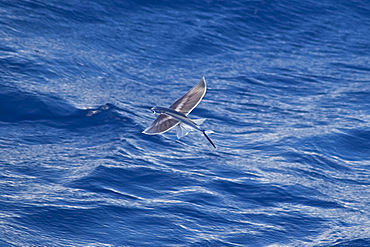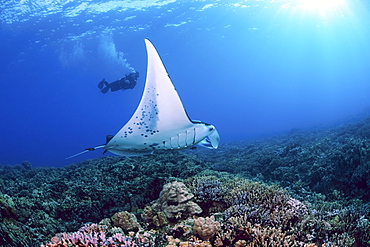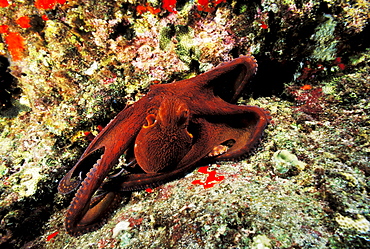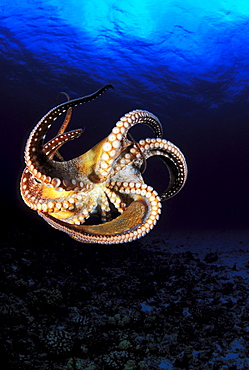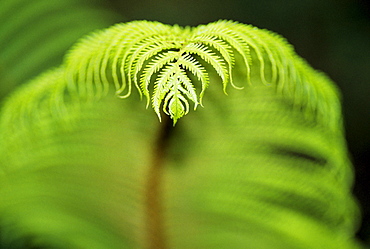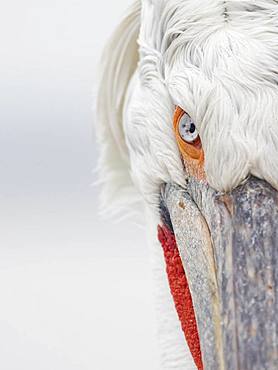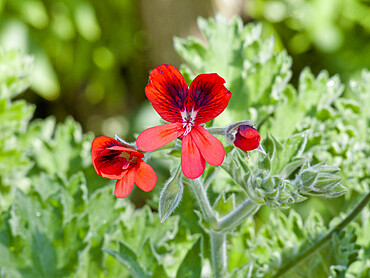Results
« Previous 1 2 3
204 results found
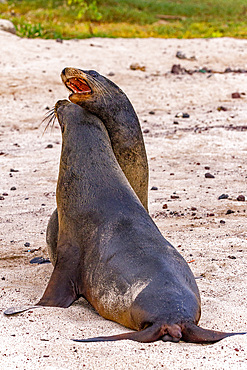
Young Galapagos sea lion bulls (Zalophus wollebaeki) mock-fighting in the Galapagos Islands, UNESCO World Heritage Site, Ecuador, South America
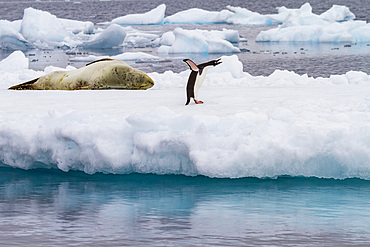
Adelie penguin (Pygoscelis adeliae) on ice floe with leopard seal at Brown Bluff, Antarctica, Polar Regions

Male Great frigatebird (Fregata minor) in breeding plumage with red gular pouch, on North Seymour Island, Galapagos Islands, UNESCO World Heritage Site, Ecaudor, South America
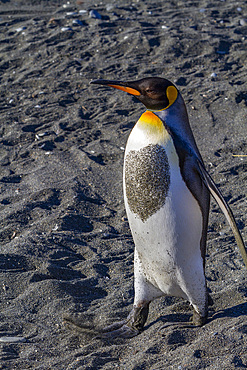
King penguin (Aptenodytes patagonicus) breeding and nesting colony on South Georgia Island, Southern Ocean, Polar Regions
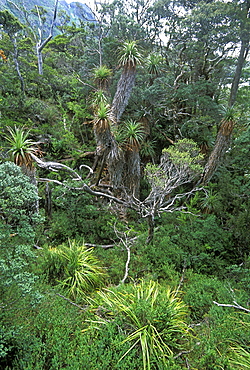
Pandani, a species unique to Tasmania and the tallest heath plant in the world, in sub-alpine forest in the 'World Heritage' Cradle Mountain-Lake St. Clair National Park, Tasmania, Australia, Pacific

Pandani, a species unique to Tasmania and the tallest heath plant in the world, below 1545m Cradle Mountain in the 'World Heritage' Cradle Mountain-Lake St. Clair National Park, Tasmania, Australia, Pacific

Two pandani, a species unique to Tasmania and the tallest heath plant in the world, below 1545m Cradle Mountain in the 'World Heritage' Cradle Mountain-Lake St. Clair National Park, Tasmania, Australia, Pacific
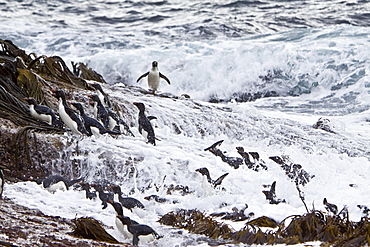
Adult Southern Rockhopper Penguins (Eudyptes chrysocome chrysocome) in the Falkland Islands. This is the smallest yellow-crested, black-and-white penguin in the genus Eudyptes. It reaches a length of 45-58 cm (18-23 in) and typically weighs 2-3.4 kg (4.4-7.5 lb), although there are records of exceptionally large rockhoppers weighing 5 kg (11 lbs). Their common name refers to the fact that unlike many other penguins which negotiate obstacles by sliding on their bellies or by awkward climbing using their flipper-like wings as aid, Rockhoppers will try to jump over boulders and across cracks. This behavior is by no means unique to this species however - at least the other "crested" penguins of the genus Eudyptes hop around rocks too. Southern Rockhopper Penguins have a global population of roughly 1 million pairs, perhaps a bit more. About two-thirds of the global population belongs to E. c. chrysocome which breeds on the Falkland Islands and on islands off Argentina and southern Chile. The Southern Rockhopper Penguin is classified as Vulnerable species by the IUCN.
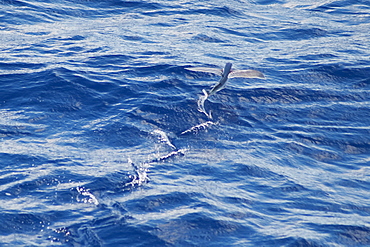
Flying Fish Species (scientific name unknown) rare unusual image, in mid-air. South Atlantic Ocean. MORE INFO: Note the trail on the surface of the water made by its tail.
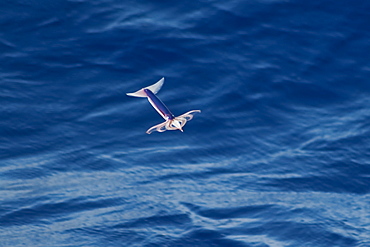
Flying Squid Species in mid-air (Ommastrephes bartramii). Extremely rare unusual image. South Atlantic Ocean. MORE INFO: Flying Squid use membranes between their tentacles (visible on pic) & two fins at the rear of the mantle to glide through the air in a similar way to flying fish. These unique adaptations allow them to avoid predation more easily. Ommastrephid squids are among the strongest swimmers in the Cephalopoda. A number of species are fished commercially. This particular species (Ommastrephes bartramii), is commonly known as "Neon Flying Squid" due to its colouration and its ability to glide over the ocean surface as seen in the photographs. Please note that this is a genuine image of a wild animal in its natural environment. It is not a digital manipulation.
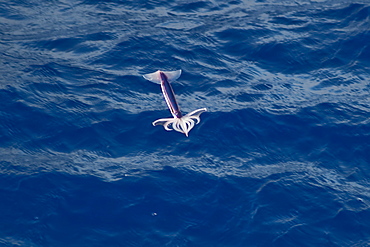
Flying Squid Species in mid-air (Ommastrephes bartramii). Extremely rare unusual image. South Atlantic Ocean. MORE INFO: Flying Squid use membranes between their tentacles (visible on pic) & two fins at the rear of the mantle to glide through the air in a similar way to flying fish. These unique adaptations allow them to avoid predation more easily. Ommastrephid squids are among the strongest swimmers in the Cephalopoda. A number of species are fished commercially. This particular species (Ommastrephes bartramii), is commonly known as "Neon Flying Squid" due to its colouration and its ability to glide over the ocean surface as seen in the photographs. Please note that this is a genuine image of a wild animal in its natural environment. It is not a digital manipulation.

Hourglass Dolphin (Lagenorhynchus cruciger) rare unusual image, adult Male porpoising. Drake Passage, Southern Ocean. MORE INFO: Males of this species can be identified by the huge hooked dorsal fin and post-anal keel, both of which are visible on this animal.
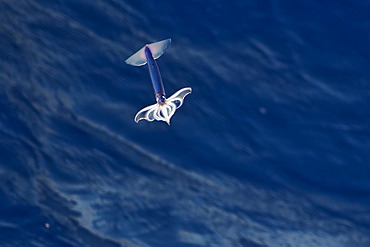
Flying Squid Species in mid-air (Ommastrephes bartramii). Extremely rare unusual image. South Atlantic Ocean. MORE INFO: Flying Squid use membranes between their tentacles (visible on pic) & two fins at the rear of the mantle to glide through the air in a similar way to flying fish. These unique adaptations allow them to avoid predation more easily. Ommastrephid squids are among the strongest swimmers in the Cephalopoda. A number of species are fished commercially. This particular species (Ommastrephes bartramii), is commonly known as "Neon Flying Squid" due to its colouration and its ability to glide over the ocean surface as seen in the photographs. Please note that this is a genuine image of a wild animal in its natural environment. It is not a digital manipulation.
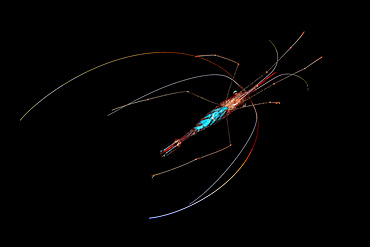
The graphic and essential shape of a Parapandal shrimp (Plesionika narval) in an unusual shot from above which also highlights the eggs, with their characteristic blue color.
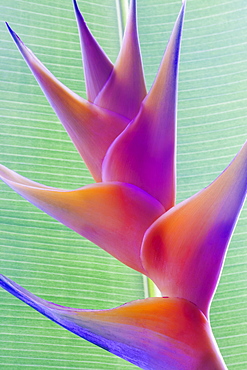
Close-up of a beautiful mixed pink Heliconia flower against a green leaf, Honolulu, Oahu, Hawaii, United States of America

A macro close-up of a beautiful orange and yellow Heliconia flower against a white background, Honolulu, Oahu, Hawaii, United States of America
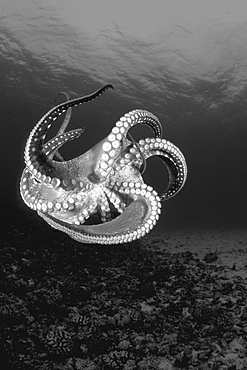
Hawaii, Day Octopus (Octopus cyanea), View of curling legs from underside (Black and white photograph).
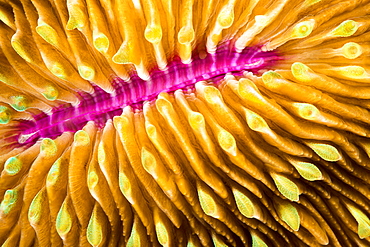
Mouth detail of a colorful and healthy mushroom coral (Fungia fungites) that is growing on a tropical coral reef. Mushroom coral is unique in the coral world, in that it does not attach itself to the bottom, Philippines
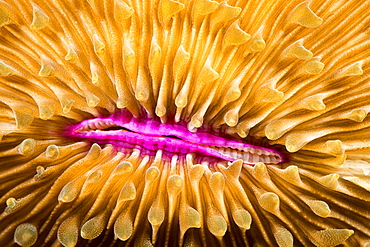
Mouth detail of a colourful and healthy Mushroom coral, Fungia fungites, that is growing on a tropical coral reef in the Philippines. Mushroom coral is unique in the coral world, in that it does not attach itself to the bottom, Philippines
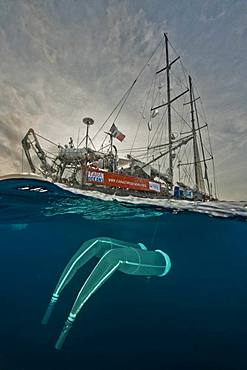
Tara Oceans Expeditions - May 2011. Tara with deployed plancton nets. On "station", the boat is drifting without engine or sails. Tara Oceans, a unique expedition: Tara Oceans is the very first attempt to make a global study of marine plankton, a form of sea life that includes organisms as small as viruses and bacterias, and as big as medusas. Our goal is to better understand planktonic ecosystems by exploring the countless species, learning about interactions among them and with their environment. Marine plankton is the only ecosystem that is almost continuous over the surface of the Earth. Studying plankton is like taking the pulse of our planet. Recently, scientists have discovered the great importance of plankton for the climate: populations of plankton are affected very rapidly by variations in climate. But in turn they can influence the climate by modifying the absorption of carbon. In a context of rapid physico-chemical changes, for example the acidification observed today in the world's oceans, it is urgent to understand and predict the evolution of these particular ecosystems. Finally, plankton is an astonishing way of going back in time ? a prime source of fossils. Over the eons, plankton has created several hundred meters of sediment on the ocean floors. This allows us to go back in time, to the first oceans on Earth, and better understand the history of our biosphere. More than 12 fields of research are involved in the project, which will bring together an international team of oceanographers, ecologists, biologists, geneticists, and physicists from prestigious laboratories headed by Eric Karsenti of the European Molecular Biology Laboratory. Galapagos

